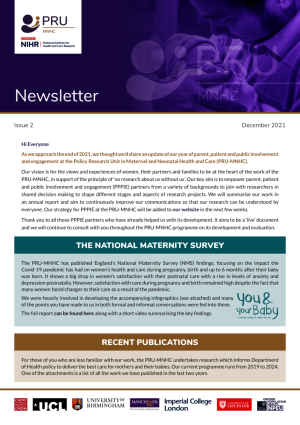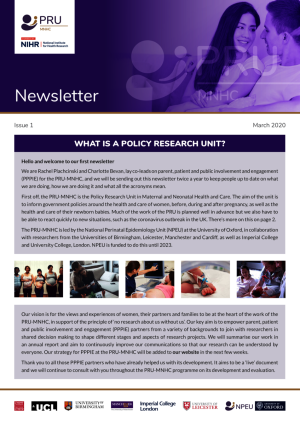Reflections on Equality, Diversity and Inclusion

Credit: Bigstock
Published on Monday, 03 July 2023
How do we make sure policy research includes everyone who's impacted by it? This question is key when Policy Research Unit researchers are thinking about how to engage the public in what they do and ensure people affected by the research, are able to hear about it and shape it. Following on from the Listening Series we asked our four new members of the Parent, Patient and Public Involvement Task Group, responsible for delivering our PPPIE strategy, for their perspectives on who we should be looking to engage and how.
Harriet, young parent representative, on intersectionality and trusted sources of information:
“When we're thinking of engaging parents we need to think about people who've had poor experiences of maternity. And we need to think about intersectionality between groups of parents - and where they might go for support, what is their first port of call. Because that's where we will learn about their experiences.
“Millennials don't get their news from the mainstream news sources anymore, they get it from social media. After Covid there's been a shift in what's considered credible...a shift to thinking: 'I can probably find what I'm looking for elsewhere and not necessarily from a government website'. So you have to take into account that people are looking at different platforms for news and you can't ignore those trends.”
Sally, disabled mums representative, on including grandparents
“Half the people at the school gate are grandparents and they often want to provide support and have up to date knowledge. They want to be involved but don't want to burden the pregnant person or partner. They are not insignificant bystanders, they want to be useful and see themselves, and are seen as, a big part of a child's life. And yet they are not invited to antenatal classes and they are not targeted for information. I think they might be a potential audience when thinking about research and its messages.”
Serena, citizen scientist, on getting the research question right
“I think there needs to be some sort of emphasis on working out who's not in the room with regard to who's affected by the research. And also, are researchers being held to account about whether they are asking the right questions? If you're not asking the right questions in the first place, you won't do research that has impact. Before it even begins, research needs to take into consideration how diverse populations are.”
Sumayya, South Asian peer support group founder, on making it easier for people to identify with research
“I think for us as a community group we are really surprised at how successful we've been locally and it's just down to the fact that we look like the women we're supporting, and we are those women.
“On one research project we've just done some illustrations and we have purposely chosen a diverse selection of women to be shown in those illustrations. When I saw those I thought that really does make a massive difference. It makes it possible to connect....”
Task Group members pointed out that being a well-known research organisation, such as a university with a global reputation, could be a double-edged sword. Some people will automatically trust it, but others would disregard information published by it as they would think it was not for them. They said: 'Some people don't see those type of institutions as organisations they can connect with.
Ensuring Equality, Diversity and Inclusion (EDI) is an on-going conversation all researchers and healthcare scientists are having, guided and informed by the public themselves. Toolkits such as those provided by National Institute for Health Research (NIHR) arc-nenc.nihr.ac.uk/resources/equality-diversity-and-inclusion-toolkit/ support best practice.'


